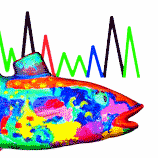 | ||
The Molecular Biology Core Facilities (MBCF) was created to allow investigators at the Dana-Farber Cancer Institute (DFCI) access to cutting edge molecular biology tools which would be tested and developed in a shared setting. Collaborations can be set up with anyone in the world. Although these services are primarily focused on Cancer and AIDS research, there is a broad spectrum of research that uses these resources.
Contents
History
The MBCF at DFCI was first started in 1984 to supply small oligonucleotides to researchers. Marvin H. Caruthers at the University of Colorado determined how to synthesize small oligonucleotides by solid-phase synthesis using the phosphoramidite method. Caruthers and Leroy Hood at the California Institute of Technology constructed the first automated DNA Synthesizer which the MBCF successfully tested after discussions with Don Taylor.
Because of the growing demand for oligonucleotide primers to initiate DNA replication and for probes, a plan was put into place to develop a core facility to produce reagents for molecular biologists as well as instrumentation for the analysis of DNA and protein samples. This plan stated that a charge-back method would be put in place to fairly spread the resources as a shared facility.
A Peptide Synthesizer using Bruce Merrifield's solid phase peptide synthesis was brought online in 1988 when Fmoc chemistry became commercially available. A Protein Sequencer using Edman degradation was installed in 1989 quickly followed by several DNA Sequencers which were the first to use fluorescent dye terminator chemistry. Mass Spectrometers were acquired to provide analysis of synthesized peptides but soon grew into a stand-alone service in high demand. Biacore instrumentation added for ligand kinetics in 1996 (and updated by Shared Instrumentation Grant to a Biacore 3000 in 2004). In 2007 a large expansion of high throughput proteomics using mass spectrometry has been funded by private donation. Blais Proteomics Center. (BPC)
The Molecular Biology Core Facilities has had a continuous web presence since 1992 and began receiving primer sequence for high throughput DNA synthesis by web forms in 1995 when new high volume DNA synthesizers were brought on-line. Since 2004 all interactions between researchers and the core services have been moved to a web based LIMS system.
The MBCF is constantly evaluating new instrumentation which could eventually become a shared resource. The future massively parallel DNA sequencers which can resequence entire genomes in just a few days, (454, Solexa+Illumina, Helicos, SOLiD, Visigen, PacBio, ION Torrent), are being made available to researchers by various methods. In 2009 the Heliscope from Helicos BioSciences began being evaluated in the genomics facility. The Helicos service was shut down in 2011. An Illumina MiSeq has been evaluated on multiple projects and now a series of three MiSeqs have been streamlined for fast analysis of Next Gen samples. Library prep has been automated on an IntegenX Apollo 324 robot and several instruments have been incorporated into quality control of samples including the Pippin Prep by Sage Biosciences, an Agilent Tapestation Bioanalyzer and an Echo QPCR system from Illumina. The Mass Spectrometry proteomics facility has also undergone a large expansion to undertake more complex high-throughput projects as part of the Blais Proteomics Center.
Recent expansion of genomics includes three Illumina NextSeq 500 s as well as an Illumina Neoprep Library prep robot.
All MBCF staff are Association of Biomolecular Resource Facilities ABRF members in good standing.
Research tools available
Funding
The MBCF is for the most part funded as a straight fee for service chargeback core facility. At times other sources of funding for research and development or expansion are incorporated into the overall budget.
